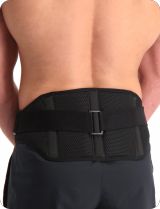Spinal Stenosis
Suffering from spinal stenosis? If so, then take a look at our assortment of support products. Tested and selected by our Medical Team. Prefer additional information? Feel free to read on, we're more than happy to explain it to you.
Read more »
Which brace is best for you?
For your convenience we use 3 protection levels, that way you will always pick the right brace.
Level 1: Is colored green, and stands for Basic protection.
Level 2: Is colored orange, and stands for Advanced protection.
Level 3: Is colored red, and stands for Highest protection.
Spinal stenosis, or the narrowing of the lumbar spine canal is a disorder that commonly occurs among the elderly. People who suffer from this disorder have pain when walking and, for example, when they work standing. It is not always a painful feeling, but more a tired feeling, making this disorder particularly annoying. As the symptoms get worse, the walking distance becomes smaller. As long as the patient sits down on a bench or leans forward, the complaints subside. The complaints are usually felt in both legs, sometimes only in one leg. Lying on your side, or with the legs raised, often helps as well. Stopping after walking does not help because the symptoms occur even after a long time. While people used to walk upright a lot, nowadays people start to lean forward a bit, because this position makes the complaints easier to bear. Also striking, is the fact that most patients who suffer from spinal stenosis can easily ride a bike without significant leg and back problems. This is because the back is bent when cycling, causing the spine to get more space.
What are the symptoms?
Spinal stenosis is a narrowing of the spinal canal. Because of this narrowing, nerve bundles can become trapped for a longer period of time and cause leg pains. The symptoms of spinal stenosis mainly occur while walking or when standing still for a long time. Spinal stenosis can be a congenital disorder that only occurs later in life. This is due to the structures around the inner channel. With older people, these structures can lead a narrowing of the spinal canal.
Surgery, exercise, or a brace?
Not everyone suffering from spinal stenosis has to undergo surgery. Only when the complaints are signifcant and the patient's social functioning is at risk of being disturbed while the diagnosis was clear, surgery is the only solution to help the patient get rid of the symptoms. Sometimes, doctors can recommend you to wear a brace for additional support and pain relief.


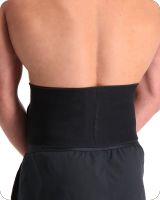
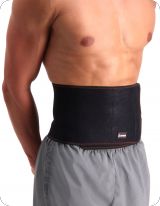
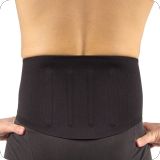
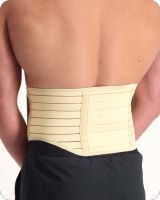
_160_216_80_ffffff_all_10.jpg)
